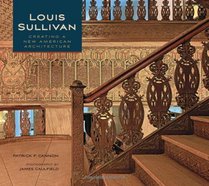Search -
Louis Sullivan: Creating a New American Architecture
Louis Sullivan Creating a New American Architecture
Author:
On the eve of the twentieth century, Chicago was rapidly outgrowing its borders. Architect Louis Henry Sullivan (American, 1856-1924) answered the demand for more office space, theaters, department stores, and financial centers by pioneering what would become an essential model for city life?the skyscraper. Blending Art Nouveau complexity with g... more »
Author:
On the eve of the twentieth century, Chicago was rapidly outgrowing its borders. Architect Louis Henry Sullivan (American, 1856-1924) answered the demand for more office space, theaters, department stores, and financial centers by pioneering what would become an essential model for city life?the skyscraper. Blending Art Nouveau complexity with g... more »
ISBN-13: 9780764957710
ISBN-10: 0764957716
Publication Date: 3/15/2011
Pages: 192
Rating: ?
ISBN-10: 0764957716
Publication Date: 3/15/2011
Pages: 192
Rating: ?
0 stars, based on 0 rating
Genres:




